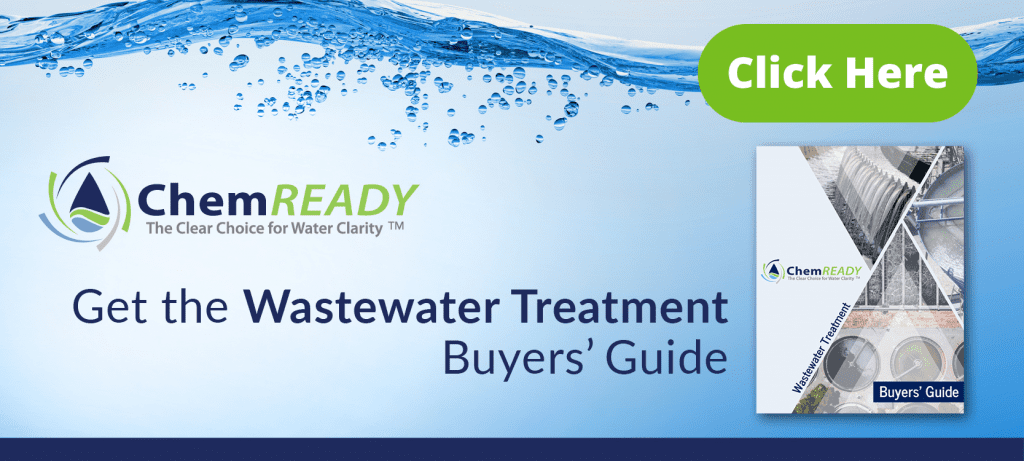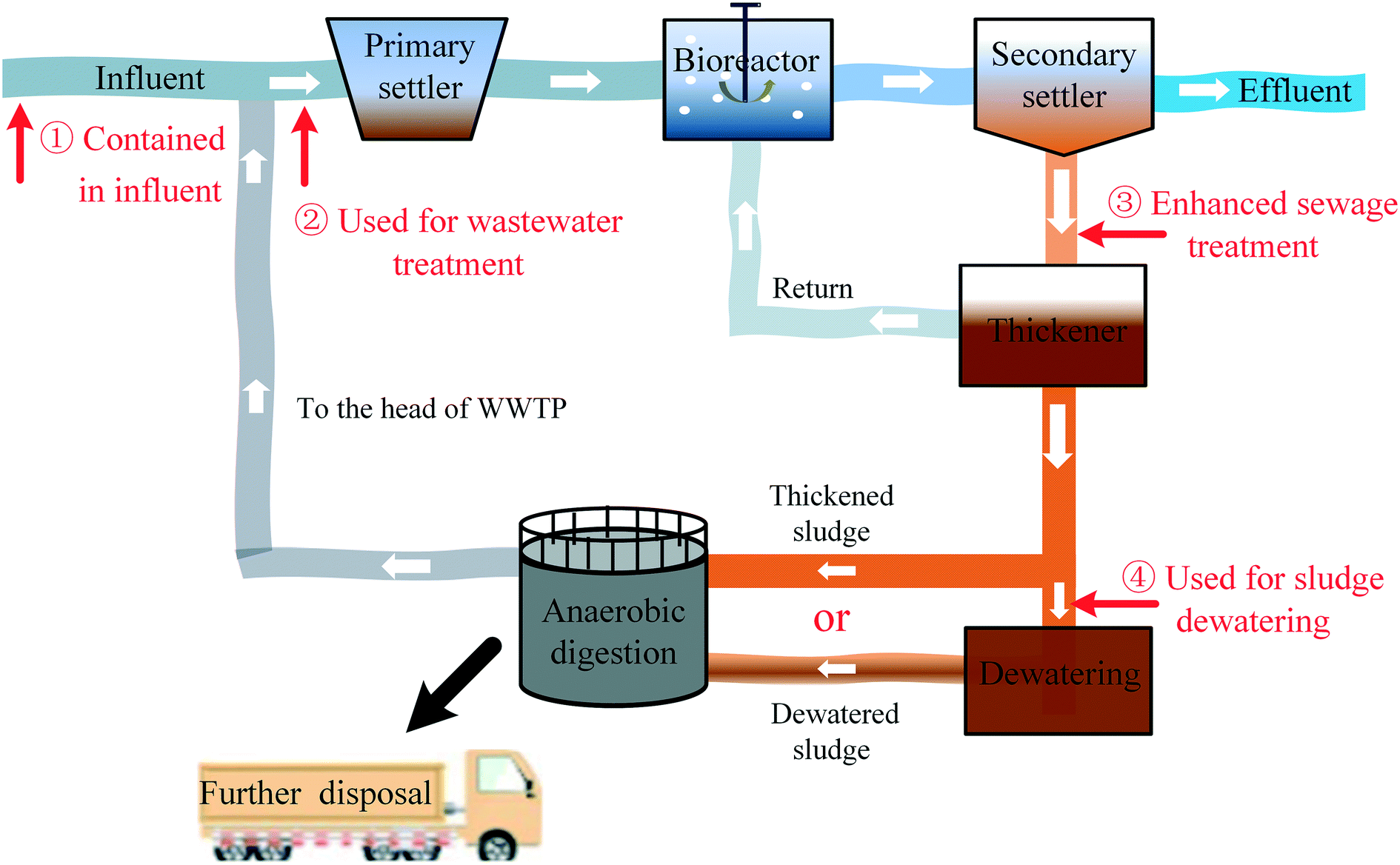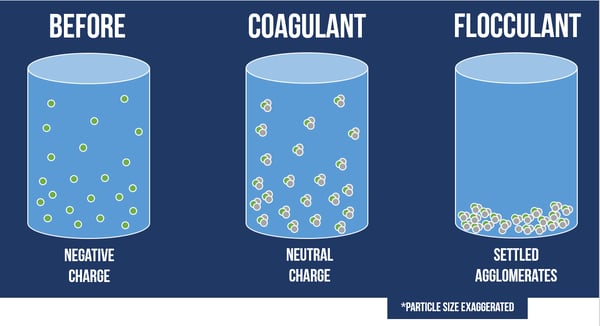The Coagulant Which Is Not Used for Sewage Treatment
The domestic wastewater collection and treatment rate of Nairobi Kenya are not high. Organics removal and enhanced coagulation are effective with traditional coagulants like aluminum sulfate ferric chloride and ferric sulfate as well as formulations like polyaluminum chloride PACl and acid alum.

West Point Treatment Plant No Date Water Treatment Plant Water Treatment Plants
When they are introduced to the water they react with the alkalinity of the water and hydrate to form a metal hydroxide.

. Polyaluminum Chloride PAC Aluminum Chlorohydrate ACH. What is the most commonly used coagulant in water treatment. The coagulant which is generally not used for treating the sewage is alum ferric chloride ferric sulphate chlorinated copperas.
In sewage having fully oxidised organic. Ferric sulfate aluminum sulfate or ferric chloride classed as aluminum or iron salts are common coagulants for water treatment. Coagulants Available for Wastewater Treatment.
Ferric chloride is widely used for sewage treatment and Alum is widely used for water treatment. Coagulation and flocculation process are physical-chemical methods that widely used in treatment of wastewater. Inorganic coagulants are often more cost-effective than their organic counterparts and they can be applied to a wide variety of water treatment operations but they are acidic by character and hence demand due care when handling and storing.
The coagulant which is generally not used for treating the sewage is. Chlorinated copper View Answer Your Comments. Ferromagnetite can be used as a coagulant in wastewater treatment due to its superparamagnetic properties that can influence the stability and adsorption capacity of the contaminants from wastewater 2735.
1 in 15 D. In waterworks practice aluminium sulphate is frequently but incorrectly referred to as alum. Below is an introduction to the coagulants representing the variety of different formulations and charge densities.
Flocculants and Coagulants for Wastewater are used in every industrial water treatment process. This paper reviewed usage Moringa oleifera seed and Cicer arietinum as. Poly Aluminum Chloride 2Polyaluminum chloride Al OHx C1y.
This is efficient in some waters requiring less pH adjustment and producing less sludge. Organic coagulants include polyamines polyDADMACS dicyandiamide and melamine formaldehyde. There are many coagulants available for wastewater treatment for a deep dive check out.
Inorganic coagulants are mostly based on metallic salts such as iron sulfate and aluminum sulfate. Answer is alum Rachel via iOS India Answer is fine but where is solution. Wastewater slurries exhibit a range of particle sizes and charge requirements.
Aluminum Chloride A second choice to Alum as it is more expensive hazardous and corrosive. The bottom of the sewage inlet chamber of septic tanks provided an outward slope A. 1 in 5 B.
Due to the limited raw material base natural reagents are not widely used in wastewater treatment on an industrial scaleBut for domestic purposes they are often used. This paper takes the domestic wastewat. Extract of moringa oleifera seed could respectively remove turbidities of.
The sewer pipe which carries sewage from. The wastewater in the Kibera slum on the outskirts of the city that is directly discharged to the environment and pollution of the surrounding water body is a serious problem. Alum is used in water treatment whereas Ferric Chloride is used in sewage treatment.
1Alum aluminum sulfate Al 2 SO 4 3. Metals-based coagulants form the largest group of products available. According to Tetteh and Rathilal 7 the incorporation of ferromagnetite with alum improved the alum cluster content inter-layer.
Simply its called PAC. Optimum Coagulant and Flocculant treatment are used to separate solids from wastewater and requires specific dosages. Coagulation and flocculation for wastewater treatment represent tested ways to improve efficiency and remove a high volume of particles.
1 in 10 C. Products may contain only metal salt like. It is available in a number of solid grades such as block kibbled or ground and is also available as a solution.
Aluminum and iron salts are the most commonly used inorganic coagulants in the wastewater treatment settings. Acid alum formulations are aluminum sulfate with 1 to 15-percent free sulfuric acid. Chemical Coagulants Used In Water Treatment Aluminum Sulfate Alum One of the most commonly used water treatment chemicals in the world.
This is achieved and overall performance improved by matching molecular. Get the details here. Coagulants used for water treatment.
1 in 20 View Answer Your Comments 25. If is the rugosity coefficient is the b. Clogging of sewers is caused due to____.
The use of synthetic coagulants is not regarded as suitable due to health and economic considerations. The coagulant which is generally not used for treating the sewage is. 30 ml of raw sewage is diluted to 300 m.
A coagulant is a chemical that is used to remove suspended solids from drinking water. Flocculating agents in wastewater treatment are used to remove contaminants. Answered The coagulant which is generally not used for treating the sewage is 221 users on this page 0 views Question The coagulant which is generally not used for treating the sewage is ferric chloride ferric sulphate chlorinated copperas.
Lets discuss the concepts related to Water Treatment and Coagulation and Flocculation. Coagulation clumps contaminants together so they are more easily removed. The sewage treatment in septic tanks.
The minimum self cleansing. The coagulant which is generally not used for treating the sewage is A. Dry water flow in a combined sewer is__.
Aluminium sulphate is the most widely used aluminium coagulant. Still the most common coagulant in the United States it is often used in conjunction with cationic polymers. Synthetic Coagulating Compounds These types of reagents are based on mineral and synthetic elements.

Application Progress Of Enhanced Coagulation In Water Treatment Rsc Advances Rsc Publishing Doi 10 1039 D0ra02979c

Civil Engineering Books Video Lectures Pdf Notes Free Environmental Engineering Pract Environmental Engineering Civil Engineering Books Nursing Student Tips

Water Treatment Coagulant Aids Youtube

Flocculants And Coagulants Chemtreat Inc

Use Of Aluminum Based Water Treatment Sludge As Coagulant For Animal Farm Wastewater Treatment Sciencedirect

What Are Flocculants And Coagulants For Wastewater Treatment Chemready

Polymer Water Treatment How Coagulants Flocculants Clean Water

Synthetic Inorganic Coagulants Advantages And Disadvantages Download Table
How Are Coagulants And Flocculants Used In Water And Wastewater Treatment

Comparison On Drawbacks Between Chemical And Natural Coagulants Download Scientific Diagram

Coagulations And Flocculation Water Treatment Suez

The Fate And Impact Of Coagulants Flocculants In Sludge Treatment Systems Environmental Science Water Research Technology Rsc Publishing Doi 10 1039 D1ew00165e

Pin By Green Method Engineering On Arabic Clothing In 2021 Wastewater Treatment Plant Wastewater Treatment Sewage Treatment Plant
How Are Coagulants And Flocculants Used In Water And Wastewater Treatment




Comments
Post a Comment